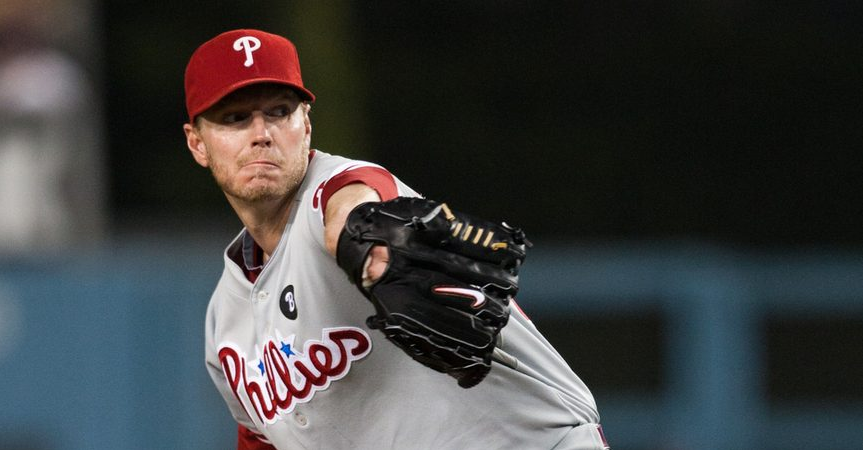The Roy Halladay Hall of Fame Quandary

With the upcoming BBWAA vote for the Hall of Fame approaching at the end of January, it’s worth a look back in time at the noteworthy careers of this year’s new contenders for immortality in Cooperstown, and whether they will (or should) be enshrined this July. Today, we’ll take a look at the case for Roy Halladay in the Hall of Fame.
*All stats provided by Baseball Reference
Roy Halladay
Career Review
For a ten-year span, it would be hard to argue that there was a better pitcher in baseball than Roy “Doc” Halladay. Between 2002 and 2011, he made eight All Star Games, nabbed a Cy Young in both leagues, and averaged 17 wins per season. However, it didn’t always look like he would turn into an ace.
In his second career start, which occured on the final day of the 1998 season, Halladay came within one out of a no-hitter against the Tigers, only for it to be broken up by a solo shot from Bobby Higginson. Despite flashing obvious potential, the young Toronto righty would falter mightily in his second full season, 2000, with a horrid ERA of over 10. It stands today as the worst season by any pitcher with more than 50 innings pitched. This led to his demotion all the way down to Single-A ball the next year. There, Halladay learned to harness his natural power through more finesse pitching, and returned to the major league club by midseason, where he pitched to a 3.19 ERA.
After re-asserting himself in Toronto, Doc would never look back. He made his first
Although most fans were aware of how good he was, the sheer dominance of Halladay was finally on full display as a Phillie, where he had the national exposure that had been excluded to him as a Blue Jay. In his first season, 2010, he put the National League on notice when he dealt his first and only perfect game in Miami against the then-Florida Marlins. The Phils, who were the reigning two-time pennant winners, cruised to the NL East title that season, with a record of 97-65. In the NLDS against the Reds, Halladay did something that had only been done once before in MLB history by tossing a no-hitter in the postseason, a game that stands as the highlight of his career. However, the Phillies would be upset by the eventual champion Giants the following round, ending Halladay’s first taste of October baseball. He won the Cy Young that year, becoming just the fifth pitcher to win in both leagues.
Next year’s Phillies team came in looking even better than the previous season, and they eclipsed the 100-win mark. However, they were upset yet again, this time by the
Sadly, it is impossible to talk about Halladay without thinking of the tragic plane crash that took his life at age 40 in 2017. It brought to an end a remarkable baseball life, and many of the voters this year will be hard pressed to view his accomplishments without thinking of his untimely death.
Numbers that Matter
- 67: The number of complete games Halladay pitched from the start of his career in 1998, 13 more than the next closest pitcher
2,749⅓ : The career innings Halladay pitched, which would be the second fewest by a starting pitcher in the Hall (Sandy Koufax)- 2: Only two other pitchers in MLB history have pitched both a perfect game, a separate no-hitter, and won two Cy Youngs: Walter Johnson and Koufax.
- 58.7: Halladay’s fWAR between 2002 and 2011, which is about 10 wins higher than the next closest pitcher.
- .659: Halladay’s winning percentage, the fifth best since 1900 for all pitchers with over 2,500 innings pitched (Whitey Ford, Pedro Martinez, Christy Mathewson, and Lefty Grove)
Pessimist’s View
For Halladay, it is a question of longevity. While there is no question he was one of the game’s best for a decade, he had virtually no impact outside of that
Verdict
- First-Ballot Election to Hall of Fame, but if not, Second or Third-Ballot is almost a guarantee.
Should He Get In?
- Yes. The story of baseball in the 2000’s is almost impossible to tell without him.
-Bryan Armetta
















